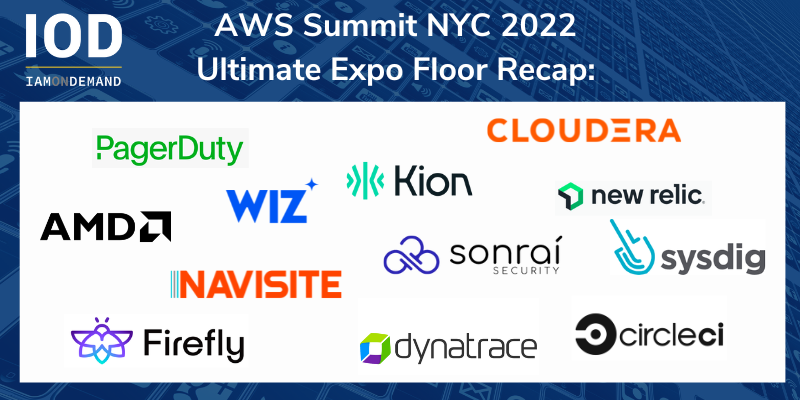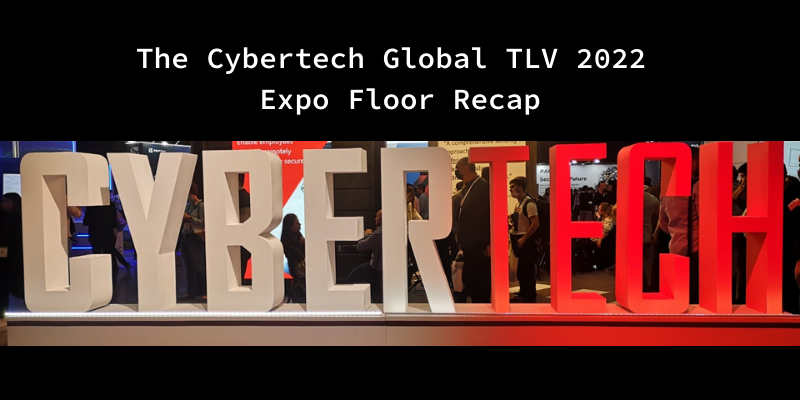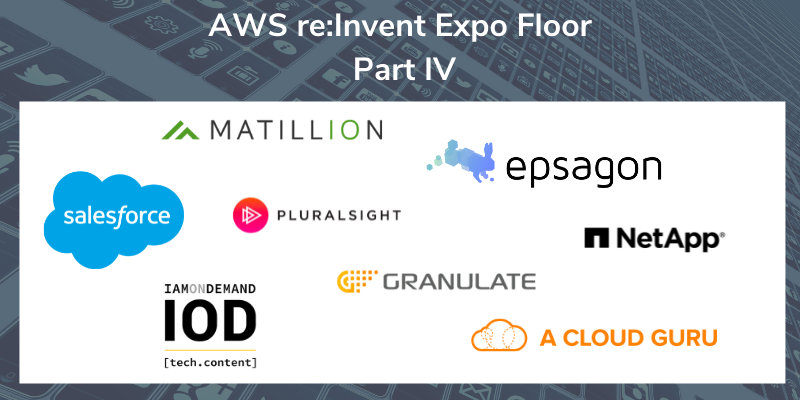AWS makes up the core of so many of the tech companies we work with here at IOD, so we love keeping up to date with what’s going on within AWS and with the innovative companies that are using its technology as the backbone of their incredible solutions.
We’ve already shared with you how psyched we were to get back to in-person conferences with our coverage of AWS re:Invent 2021 Las Vegas back in November. So you can probably guess that we were thrilled to head to NYC last week for AWS Summit New York, an event that’s smaller but no less exciting, with over 70 workshops, chalk talks, keynotes, and a lot more.
Once we were past the mega-long registration lines and a quick AWS Serverlesspresso—a highlight that debuted at re:Invent 2021 in Vegas—our next stop was the show floor, always a great way to meet AWS experts, builders, customers, and partners.
We had so much fun sharing highlights from the AWS re:Invent show floor that we decided to do the same at AWS Summit NYC, giving you a quick roundup of some of the most exciting and innovative companies IOD’s roving blogger Samir Behara met up with there.
Ready?
Let’s dive in…



The clean blue and white lines of the Wiz booth made this one of our first stops. All of us are aware that cloud security is a challenge—to say the least. Misconfigurations, vulnerabilities, compliance… putting it all together can be a nightmare. Wiz gives you a new way to improve your security posture across your cloud platform, PaaS, serverless, virtual machines, app development, and more.
Built for complex multi-account environments, Wiz’s unified tool collects cloud events from various sources, detects suspicious activities across workloads, and prioritizes critical risks with actionable insights. Chatting with Enterprise Account Executive Sam Russotti, we were particularly impressed with Wiz’s agentless scanning process, which you can use to identify misconfigurations, provide graphical visualization showing pathways to a breach, and produce a comprehensive compliance heatmap.

It was fascinating to stop by the Cloudera booth, where we showed up with all our questions about the data challenges that almost all businesses today are facing.
Quantities of data are growing, particularly unstructured data, which is always hard to analyze. Cloudera adds flexibility to your data by letting you overcome some of the limitations of modern data architectures, making data-driven insights and initiatives an exciting possibility. Across public and private clouds, Cloudera helps you accelerate data-driven initiatives, no matter where your data resides: fabric, lake, mesh, warehouse, and beyond.
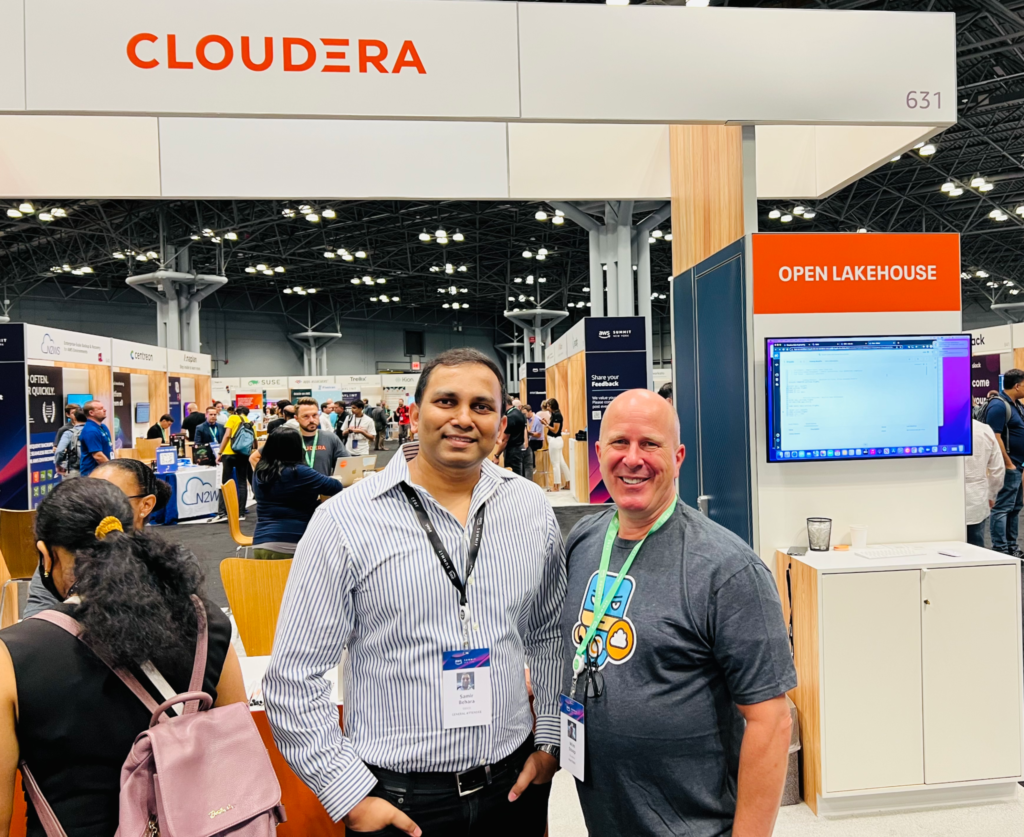
It was great stopping by to chat with Senior Director of Product Marketing Wim Stoop about the benefits of Cloudera and enjoying in-depth demos on universal data distribution, open lakehouses, fraud detection, and AI apps.

One booth we enjoyed visiting and hearing more about was Sonrai. Running a business on a public cloud gives you power and freedom, but it also adds complexity. Sonrai helps enterprises monitor their public cloud footprint and remove risks from their environments.
One of the greatest sources of risk to businesses today is identity management, and Dig, Sonrai’s cloud infrastructure entitlement management (CIEM) solution, helps enhance security measures and enforce compliance across all your cloud environments. It also integrates with AWS Control Tower, AWS Security Hub, AWS Inspector, AWS Config, and AWS CloudTrail.
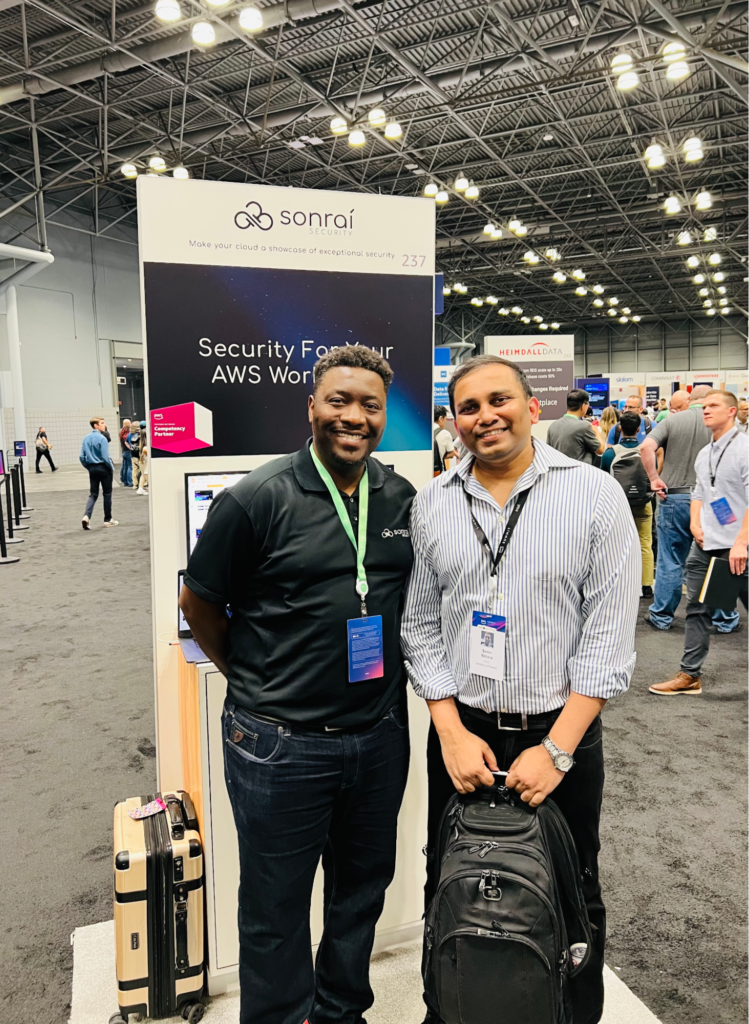
Speaking to Regional Sales Manager Max Deighton about Dig, we were particularly impressed by the way it offers clear, easy-to-understand visibility, letting you know which accounts and processes have effective permissions to which resources, and letting you prioritize risks and enforce policies based on business impact.

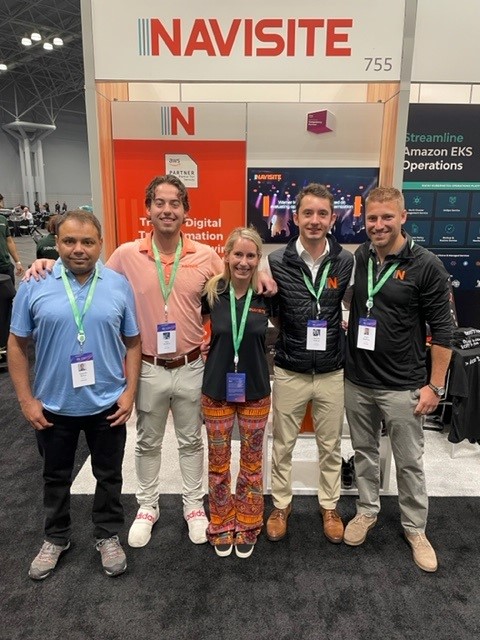
Welcome to the NaviVerse! At least, that’s how Navisite refers to its large extended family of global employees. More and more businesses are turning to managed services to handle the complexity of cloud, and Navisite specializes in helping enterprises accelerate their digital transformation and cloud adoption.
We were already familiar with Velocity Cloud (acquired by Navisite in 2021) to manage SQL server instances in the AWS cloud. At the Navisite booth, we chatted with AWS Alliances Associate Nathan McKee about lowering cloud migration costs, which is one of Navisite’s areas of expertise; he also shared his enthusiasm for AWS’s Migration Acceleration Program (MAP), which delivers tools and best practices to make cloud migration faster and more cost-effective.
As a Premier Consulting Partner of AWS, with a global team of AWS specialists, Navisite has the experience and expertise to guide customers successfully through even the most complex migration projects.


The CircleCI booth might win the “fun swag” award of this AWS Summit with its YAML (“Yelling at My Laptop”) T-shirt draw—even if we didn’t win one!
With cloud changing so rapidly, developers are often stuck using older tools that demand repeated manual processes or elaborate manual project setups, or that don’t integrate well with third-party tools or developer environments.
CircleCI is making it easier to turbocharge CI/CD pipelines with automation so you can develop and deploy applications to AWS more simply. Strategic Growth Account Executive Luke Besse introduced us to “orbs,” which are what CircleCI calls its condensed YAML packages that let you share and reuse configs so you can automate repeated processes, accelerate project setups, and simplify integration with third-party tools.
You can check out all the available orbs in the registry here. While tools like GitHub Actions and Jenkins will work for automating some manual tasks, CircleCI goes a few steps beyond and is ideal for today’s complex cloud-native development projects.
Check out our ultimate recap of the Kubecon EU 2022 expo floor.

The next booth to draw us in was Kion’s, with its awesome smiling team and its promise to replace management and governance with something better: cloud enablement.
In a world where most companies are working in a multi-cloud environment, we’re all searching for ways to cope with managing environments at scale. How do you control spending? How do you enforce consistent policies and manage accounts? How do you track compliance and resolve issues? And how do you do it all without demanding too much of your existing cloud team?
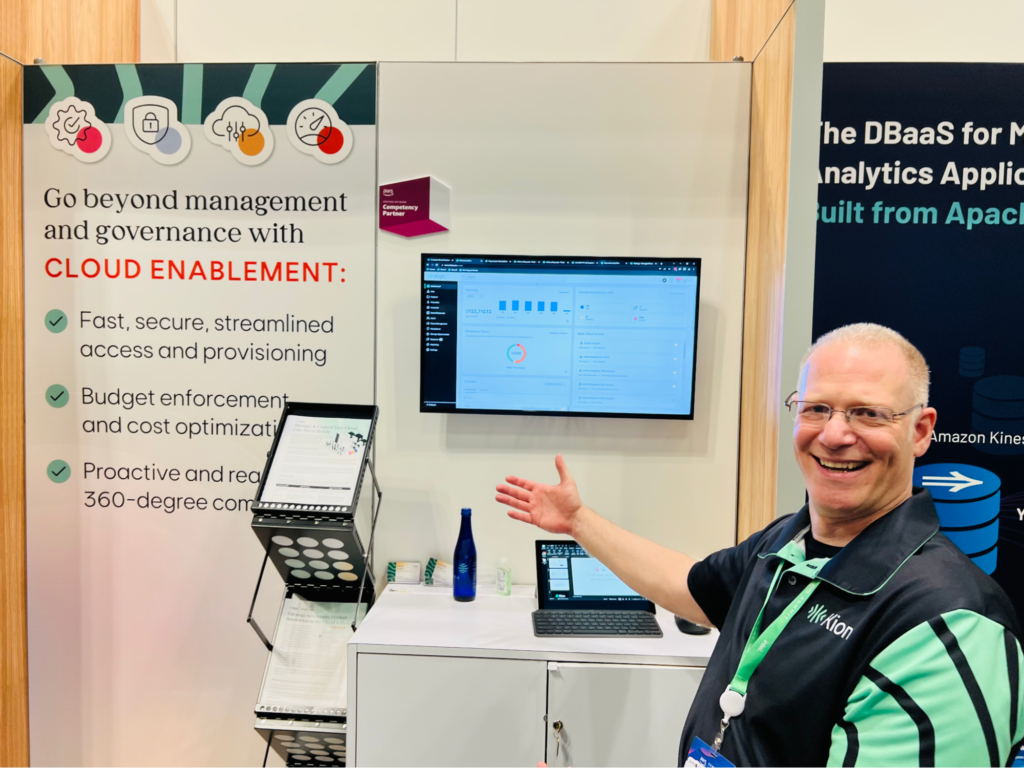
Kion (formerly cloudtamer.io) is a cloud enablement platform that goes beyond baseline cloud governance and management with a rich feature set that includes everything from account lifecycle management and continuous compliance to financial management. Kion is a comprehensive cloud enablement platform that lets you manage your cloud environments at scale. In a multi-account environment, Kion promises to help you achieve automated governance, reduce cloud cost, increase security compliance, and reduce the time demands of account creation and decommissioning.
In fact, with Kion handling the work of multiple tools, we had to ask Senior Account Executive Shannon Houpt and Principal Solutions Delivery Manager David Kalish whether they thought their platform was doing too much. Their reply? Proud (and confident) smiles. This is one company that believes very strongly in its product—and one we’ll be watching going forward.

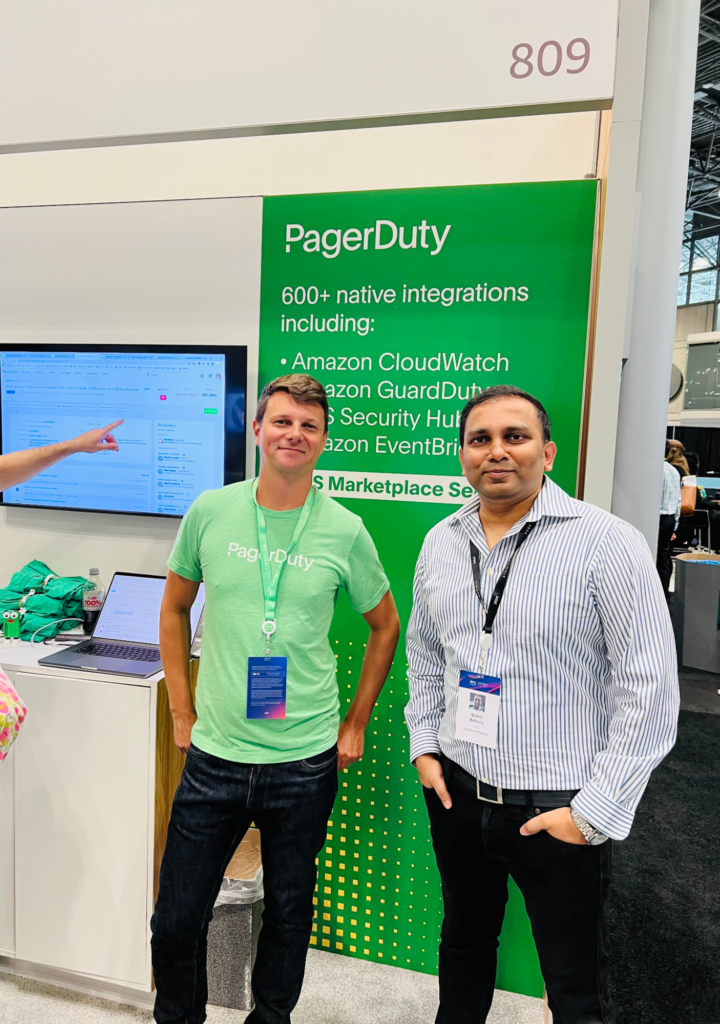
It’s easy to be overwhelmed by the many colorful booths competing for our attention, but PagerDuty’s bright green certainly got our attention and provided a welcome stop. Alert fatigue is one of the less desirable features of today’s always-on IT organizations, caused by the constant bombardment of hundreds of simultaneous messages that lack context and insight into an environment, leaving them scrambling to cope and keep up—and no way at all to get out from under the onslaught.
PagerDuty, a Forbes Cloud 100 platform, helps automate, orchestrate, and accelerate the way teams respond across your entire digital infrastructure with more sophisticated dashboarding that uses analytics and AI to group alerts, cut down the noise, and provide complete visibility into critical applications, incidents, and on-call details. With all the details in one place, the scramble is over; the right people can act efficiently, bringing down mean time to resolution (MTTR) during outages.
James Henaghan Sr Solutions Consultant demonstrated how PagerDuty can add runbook automation, replacing manual steps with automated self-service tasks. One use case for this is in automating support processes, significantly improving customer experience by helping resolve incidents faster and preventing future recurrences.

Of course, it wouldn’t be an AWS event without swinging by the Dynatrace booth. If you have DevOps use cases related to containers, microservices, or IoT—and who doesn’t these days?—it’s worth checking out Dynatrace, a unified observability and automation platform that uses AI to analyze massive volumes of observability data to produce actionable insights faster.
Their solution aims to help development teams innovate faster and work more efficiently. The push towards greater observability has spawned a range of exciting new products and platforms, and Dynatrace is among the top of this class, named a 2022 Gartner® Magic Quadrant™ leader for application performance monitoring (APM) and observability. With centralized infrastructure monitoring, application security, business analytics, and cloud automation, Dynatrace gives you a one-stop shop where you can track metrics, logs, and traces to drill down and debug problems fast.

After speaking with Senior Public Relations Manager Meg Brenner, we came away particularly impressed by Dynatrace’s integration with a range of developer technologies, public cloud vendors, and open-source frameworks, including monitoring Kubernetes clusters and service flow tracing in multi-cloud environments.


In the quest for innovation, it can be tempting to bypass some of the big players. But in the case of AMD, that would have been a mistake, as this industry veteran always has something new and exciting to showcase.
The theme of AWS Summit NYC was “Scale… Anything,” and one way AWS lets customers achieve that promise is by choosing from a flexible range of options for compute, letting each organization find the perfect balance of price and power for each application.
One of the most appealing options available now is AMD-powered instances from Amazon EC2, which let users run general-purpose (M6a/M5a), memory-optimized (R5a), graphics-intensive (G4ad), compute-intensive (C6a/C5a), or spiky, burst-optimized workloads (T3a). Third-generation AMD EPYC-powered instances offer high performance with up to 35% better price performance.
Swinging by the AMD booth, we were fascinated by a few benefits of these new options for EC2 instances, including:
- High performance: Assist in optimizing cost and workload performance.
- Seamless migration: Easily migrate applications running on existing EC2 instances to the new AMD-based instances.
- Better economics: Achieve a cost benefit of up to 10% versus comparable instances.

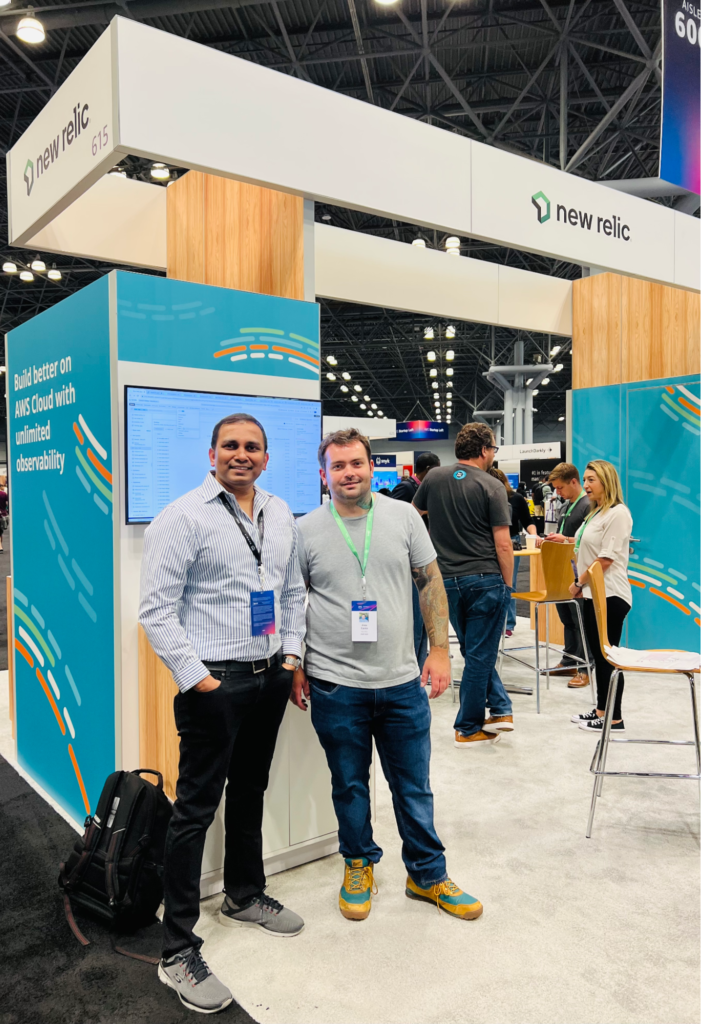
Another longtime favorite stop is New Relic. They’ve been around a lot longer than other players, but they’ve lasted this long by always having something new and innovative to show off.
To build better software, you need monitoring and observability that works proactively. New Relic keeps track of your entire stack via a single platform, with 470 built-in integrations ready to go, including AWS, Azure, GCP, Kubernetes, and a brand-new agentless monitoring integration for SAP NetWeaverⓇ 7.5. Beyond monitoring and analysis of all your telemetry data in one place, New Relic delivers value at every stage of the SDLC, with application, infrastructure, network, browser, mobile, and synthetic monitoring capabilities.
We were obviously very impressed with the unified observability experience at the New Relic booth. This is a tool that will help get all your teams on the same page, with distributed traces and logs, Kubernetes monitoring, and the ability to build a customized dashboard using New Relic query language (NRQL). New Relic is also looking to expand its Partner Stack provider ecosystem with a variety of training and accreditation, as well as marketing resources, tools, and support.

The sign at Firefly’s booth gave visitors a good idea of what to expect: “Automatically transform your cloud into IaC.” That was enough to attract our interest.
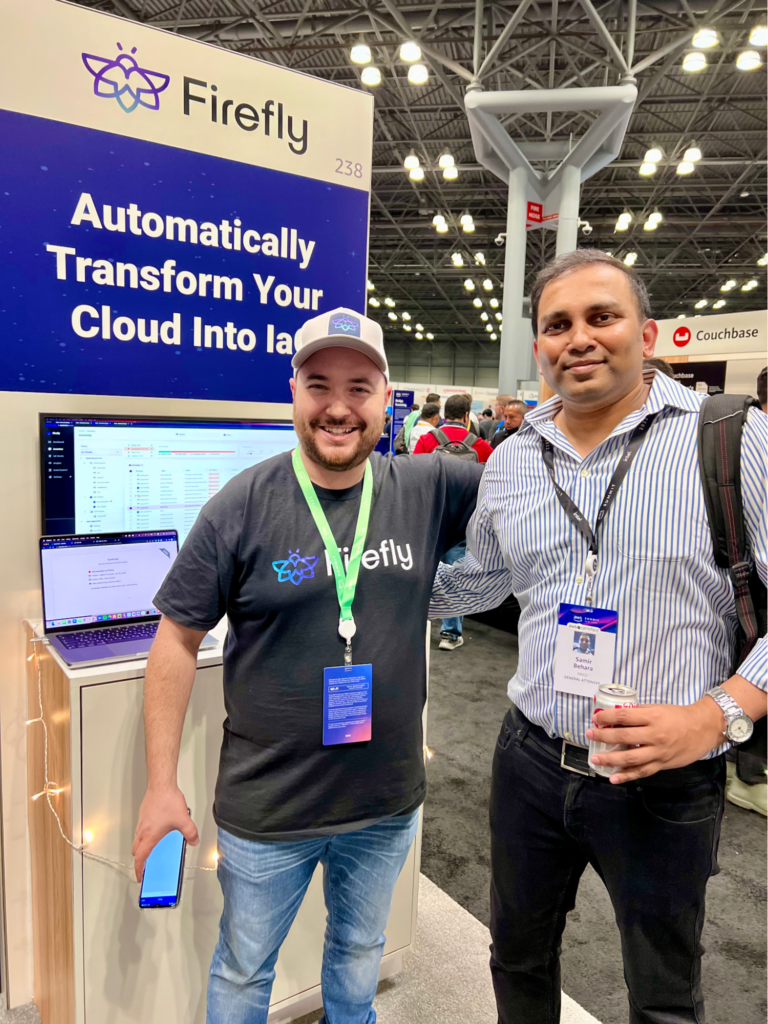
Infrastructure as code (IaC) is one of the best ways to handle some of the common problems and bottlenecks that can occur when provisioning cloud infrastructure, promising unprecedented automation and standardization at scale (tying in with the theme of AWS Summit NYC!). To bring all your cloud together in one place, Firefly’s platform enables you to transform your cloud footprint into IaC automatically. It lets you analyze and identify unmanaged resources and then codify those cloud resources to an IaC tool like CloudFormation, Helm, Pulumi, or Terraform, with which Firefly recently announced its new HashiCorp integration with Terraform Cloud run tasks. This tool impressed us based on our experience in the IaC space.
If you work in a multi-account environment, you may have encountered configuration drifts, manually created resources, and undocumented configuration changes. Firefly sends real-time notifications on drifts and remediates them as they occur, saving you all that work and helping you reclaim control over your cloud. You’ll achieve 100% IaC coverage across your environments without investing expensive engineering resources. Ensuring that all your cloud resources are managed by code stored in source control? Firefly just might make it a reality.

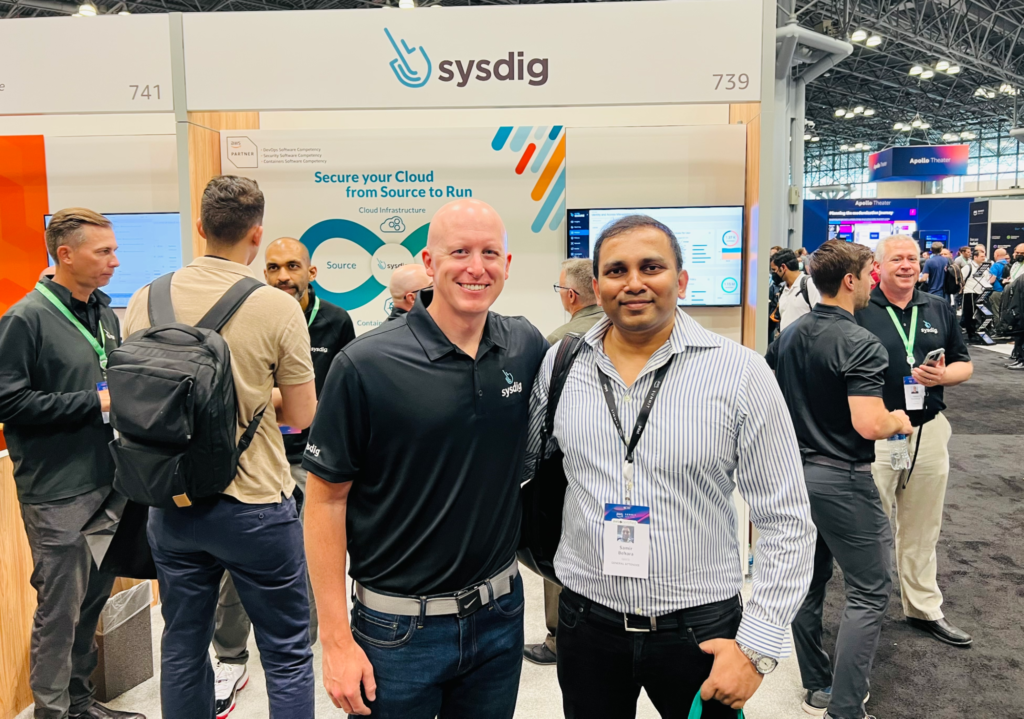
And finally, last but very much not least, we were excited to spot the Sysdig booth, since we’d heard unicorn rumors about this company and were eager to see what they offer.
Their platform revolves around three core use cases: container security, cloud security, and monitoring—all of which aim to make your cloud deployments more secure and reliable. We were particularly impressed, chatting with booth reps, about how Sysdig provides an easier way to instrument and monitor Kubernetes clusters for threat detection, compliance, and observability. If you’re running containerized workloads or using Kubernetes, you may be impressed with how Sysdig helps improve your overall security posture.
They also explored how Sysdig assists with vulnerability management, threat detection, visualizing network communication, and its latest offering, Drift Control, which aims to detect and prevent container attacks at runtime. With the rise in supply-chain attacks, this feature is one we may see competitors scrambling to implement in the very near future.
Wrapping it all up…
So were there any overarching themes that emerged from our time spent on the show floor, along with the keynote, workshops, and more? It’s impossible not to come away excited by the possibility of literally scaling anything, as the event’s catchphrase promised.
Beyond that, shows like this are more than just a good time (and a great way of getting in all our steps for the day walking around the show floor!). Most importantly, they let us keep our ear to the ground so that we can listen to our clients and really understand the pressure they’re under as software businesses, along with the kinds of messaging out there.
With so many companies struggling to get their message across, it’s more important than ever that your content shines, telling the world about your business’s unique strengths. To find out how IOD can help you get your message across, click here.
